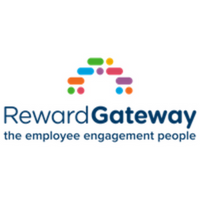5 ways to add a high five to your recognition programme

Nowadays they seem to be everywhere! You high five your mates, your children and even your work colleagues. I was at a spinning class the other day and we high fived the spinners on either side of us at the end of the class (who I might add, I didn’t even know).
Why is that? What does a high five really do? Well according to a study conducted by the University of California-Berkeley of high fives exchanged by National Basketball Association players, high fives “promote cooperation between people, communicate distinct emotions, soothe in times of stress, and are used to make inferences of warmth and trust.”
They also found that the amount of high fives exchanged clearly tied to the performance of the group. The more the team bonded through high fives, the more success they achieved.
A powerful tool
So a high five seems like a pretty powerful tool, one we could use in the workplace to achieve our business objectives. But since we can’t go around high fiving each other, especially when often colleagues are not co-located, it made me wonder, is the same true with our recognition programmes, in particular our peer-to-peer recognition programmes?
Couldn’t we say that peer-to-peer recognition is in fact a high five to our colleagues? And if so, couldn’t they achieve the same results?
It makes sense to me, as I believe that a successful employee recognition programme delivers these similar results, such as promoting cooperation, building trust and creating a more productive and successful team. In fact, according to a study by SHRM, peer-to-peer recognition is 35.7% more likely to have a positive impact on financial results than manager-only recognition.
So how can you get these results and create an effective recognition programme? I’ve put in place many recognition programmes, so I thought I’d share five tips that I’ve collected over the years as an HR professional:
Five tips:
1) Start with ‘why’
The first place to start when putting in place a recognition programme is to answer the question ‘why’. Put simply, why does it exist?
In a basketball game the answer is quite straightforward, a high five is to celebrate when a basket is made. In a company, a recognition programme is often put in place to encourage employees to live the company’s values, to drive a certain business objective, reduce turnover, improve employee engagement, or often, a combination of a few of these.
If you don’t start by answering this question your ‘players’ (employees) could be throwing balls into the wrong basket (achieving the wrong objectives).
2) Build your ‘team’
With a basketball team, it’s important to build a team that will work together to win their games. For example, if your entire team was made up of 6’6” players who were great at scoring but not defending, you probably wouldn’t win many games.
You need a diverse team, one which has a combination of players with different strengths. Point in fact, when I recently went to a Boston Celtics basketball game, the player who both scored the most points and led the team, was actually the shortest one on the court, being only 5’9”.
The same is true with recognition programmes. If you are relying on one recognition plan to achieve your objectives you may be setting it up for failure. Instead, look at mixing up your ‘team’ by having a combination of plans, adding up to a winning team.
For example, at my company we have an eCard plan, a quarterly award plan, and we recently introduced a leadership recognition plan. These all play a different and important role to play in helping us win the ‘game’ with our employees.
3) Be fresh
Have you ever noticed that during a basketball game players are continually replaced, with ones coming in and out? This does two things, the first is making sure the players are fresh, so have enough energy to do their job, and the second is making sure the plays are fresh, so they are changed to adapt throughout the game so the team can be their best.
It’s critical to do the same thing with recognition programmes, for they can get boring, stale and ineffective if you don’t change them from time to time.
For example, at Reward Gateway the core of our peer-to-peer recognition programme is our company values, but we do change the other elements quite often to include ones focussed on business priorities, ones aligned to a certain time of the year, or just ones which are a bit of fun. Together they make sure that employees enjoy and engage with the programme, making it more effective for the employees and the business.
4) Get social
How could you write anything these days without talking about the power of using social media? With social platforms on the rise, and many forming an important part of a company’s strategy and ‘toolkit’, it should be considered for recognition programmes.
Social is a great way of putting the spotlight on recognition, celebrating the high fives and recognition which is being given from one employee to another. By doing this, the high fives are shared to a wider audience, impacting the positive effects they deliver. A note to make is that some providers are including this as part of their online platform, so do check if this is something you can do at your company.
5) Keep measuring
Throughout a basketball game, the coaches work together to review and measure what plays are working and which ones aren’t. This is critical, for without measurement they will do the same plays over and over again, regardless of whether they help the team win.
With recognition programmes it’s also critical to measure, as you want to make sure that the programme is doing what you need it to do, with your employees participating and acting in a way to achieve the programme’s overall objectives.
If it is, keep going as you are, but if it isn’t, adjust your controls (programme) to change it to be more effective. If you don’t do this you could be wasting valuable time and money, ‘shooting’ in the wrong basket.
So get out there and use your recognition programmes to deliver a ‘you got this!’ feeling, and help your ‘players’ (employees) score the winning ‘basket’ (objectives).
Debra Corey is group reward director at Reward Gateway.
This article was supplied by Reward Gateway.
Supplied by REBA Associate Member, Reward Gateway
We help the world's leading companies with an employee engagement platform.







